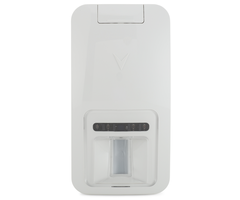Alarm.com Updates Website Camera Feed Viewer
Posted By Michael GorisWe actually missed this about a month ago, but it appears Alarm.com has updated their website camera video feed viewer to use native browser streaming. This replaces the old Adobe Flash video viewer. This change does not come as a surprise, as Adobe Flash will soon reach its end of life.

Being able to live-stream the video feed for Alarm.com Security Cameras is one of the most important features of these devices. This can be done using the Alarm.com website or the mobile app. The change being discussed here affects streaming through a web browser and the Alarm.com website. Before, it was only possible to stream Alarm.com Cameras on the website by using the Adobe Flash video viewer. The update provides support for native browser streaming. This will make it easier for most viewers to access their camera feeds.
With Adobe Flash reaching its end of life by the end of the year, this update was basically a no-brainer for Alarm.com. Users will still have the ability to view their cameras using Adobe Flash until the end of the year. At that point, only native browser streaming will be supported for camera streaming through the Alarm.com website. Native browser streaming is easier to maintain, and it does not require users to install and update a Flash plug-in. Native browser streaming support was actually made available towards the end of September, but we never covered the news in our blog prior to now.
When you access your Alarm.com account through the website, the Video section will appear on the left if Video Surveillance has been added to your account. By clicking on this section then Live Video, you will be able to choose a camera for streaming. In the upper-right corner there will be a toggle bar for you to enable or disable the "New Viewer. When the bar is blue, the New Viewer is enabled, and native browser streaming will be used. This is the default option. You can click the toggle bar to turn off the New Viewer and use Adobe Flash streaming. This will only be available until the end of the year. After that, no Flash streaming will be available.

Please note that the New Viewer and native browser streaming only allows the live video stream to be maintained for a few minutes at a time. After that, you will get a message that the stream has "timed out". You will need to refresh the stream to resume viewing. This is normal, and it's just a limitation that comes with Alarm.com Camera streaming. Simply click the "Play" button that appears on the screen to refresh the stream and continue watching.
Also note that while the camera viewer now has native browser streaming available, the streaming video recorder (SVR) timeline page still uses Adobe Flash. Native browser streaming is not yet available for SVR functions on the Alarm.com website. We expect that to change in the near future, as Alarm.com continues to make their transition away from Flash. We do not have an ETA on when that will become available, but we will be sure to provide an update once we learn more.
If you have any questions about Alarm.com Camera streaming, or if you are interested in monitoring service to gain access to Alarm.com, please email us at support@alarmgrid.com. Remember that Alarm Grid customers need either a Platinum Level Plan or a Video-Only Plan to gain access to Alarm.com for camera streaming. Our team is happy to address any questions or concerns you may have via email. We check our email during our usual business hours of 9am to 8pm ET M-F. We look forward to hearing from you!











 Freeze sensors alert your system when the temperature in the building drops to a dangerously low level, usually due to the HVAC system being broken. Having one of these sensors in your home or business is crucial for monitoring the building while you are away. The consequences of having below-freezing temperatures in your home or business can be dire. The pipes can freeze, and major damage can occur. Installing a freeze sensor is small price to pay to prevent this from happening.
Freeze sensors alert your system when the temperature in the building drops to a dangerously low level, usually due to the HVAC system being broken. Having one of these sensors in your home or business is crucial for monitoring the building while you are away. The consequences of having below-freezing temperatures in your home or business can be dire. The pipes can freeze, and major damage can occur. Installing a freeze sensor is small price to pay to prevent this from happening.